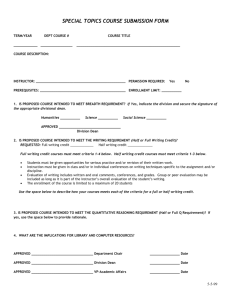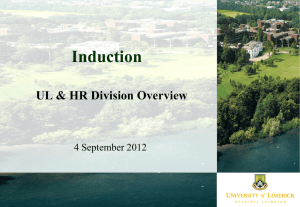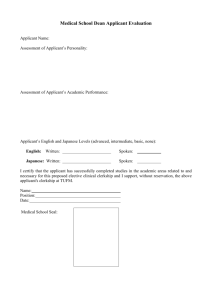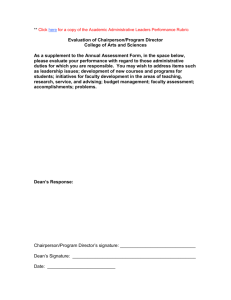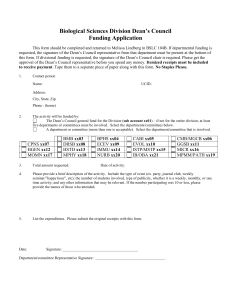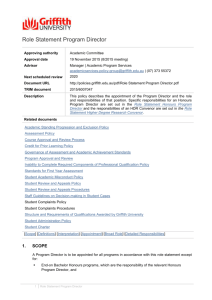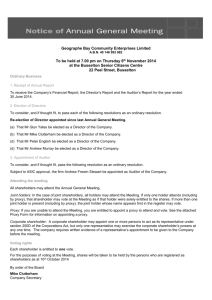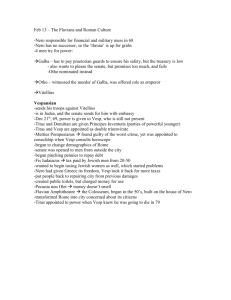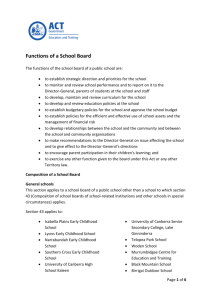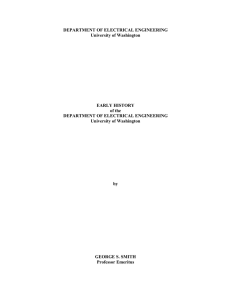Leave with Pay, College of the Arts and Sciences
advertisement
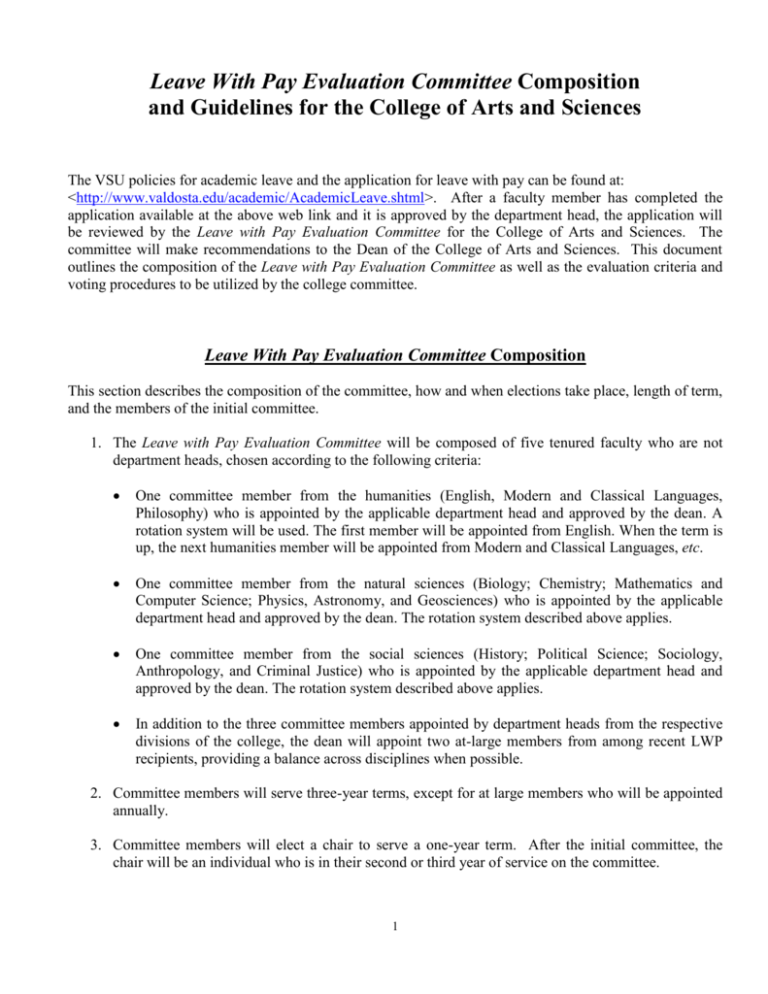
Leave With Pay Evaluation Committee Composition and Guidelines for the College of Arts and Sciences The VSU policies for academic leave and the application for leave with pay can be found at: <http://www.valdosta.edu/academic/AcademicLeave.shtml>. After a faculty member has completed the application available at the above web link and it is approved by the department head, the application will be reviewed by the Leave with Pay Evaluation Committee for the College of Arts and Sciences. The committee will make recommendations to the Dean of the College of Arts and Sciences. This document outlines the composition of the Leave with Pay Evaluation Committee as well as the evaluation criteria and voting procedures to be utilized by the college committee. Leave With Pay Evaluation Committee Composition This section describes the composition of the committee, how and when elections take place, length of term, and the members of the initial committee. 1. The Leave with Pay Evaluation Committee will be composed of five tenured faculty who are not department heads, chosen according to the following criteria: One committee member from the humanities (English, Modern and Classical Languages, Philosophy) who is appointed by the applicable department head and approved by the dean. A rotation system will be used. The first member will be appointed from English. When the term is up, the next humanities member will be appointed from Modern and Classical Languages, etc. One committee member from the natural sciences (Biology; Chemistry; Mathematics and Computer Science; Physics, Astronomy, and Geosciences) who is appointed by the applicable department head and approved by the dean. The rotation system described above applies. One committee member from the social sciences (History; Political Science; Sociology, Anthropology, and Criminal Justice) who is appointed by the applicable department head and approved by the dean. The rotation system described above applies. In addition to the three committee members appointed by department heads from the respective divisions of the college, the dean will appoint two at-large members from among recent LWP recipients, providing a balance across disciplines when possible. 2. Committee members will serve three-year terms, except for at large members who will be appointed annually. 3. Committee members will elect a chair to serve a one-year term. After the initial committee, the chair will be an individual who is in their second or third year of service on the committee. 1 4. Committee members will serve three-year terms after a rotation schedule has been established on the following basis: An initial committee will be appointed by the applicable department heads to serve the following terms: Member Humanities Natural Sciences Social Sciences Term 2012-2013 2012-2014 2012-2015 Length (years) 1 2 3 Subsequent appointments will be made by the applicable department heads: Member Humanities Natural Sciences Social Sciences Fall Semester 2013, 2016, ... 2014, 2017, ... 2015, 2018, ... Leave With Pay Evaluation Committee Guidelines 1. Committee members will individually read all of the applications for academic leave. Any potential fellowship or other monetary award discussed in an application will not be considered unless the award has been received. 2. According to the university guidelines for academic leave, preference is given to full-time tenured faculty members with six or more years of service. 3. The committee will discuss the submissions, keeping in mind that the policy states that these awards should be available to faculty “only for the purpose of promoting scholarly works and encouraging professional development” (VSU Faculty Handbook p. 81). If questions arise, the committee may request information from the applicant’s department head. The committee should consider the following criteria: A clearly defined project that relates to the applicant’s professional development and grounded in the applicant’s discipline; An articulated timeline in which work is to be accomplished; A book contract deadline; A preference for work in its later stages rather than its beginning stages; If the academic leave is requested for a project in its early stages, a firm argument as to why time is needed for the project to get underway; A preference for worthy projects by applicants nearing personnel actions, particularly tenure and promotion; Department head rankings, particularly regarding multiple applicants from the department; A proven track record of publications/project completion; Expectation that the academic leave will result in scholarly publication or a grant proposal. 2 4. Members will then vote by secret ballot on each proposal, rating it acceptable or unacceptable and making written comments to support that rating. In the case where voting is not unanimous, the majority prevails. 5. After another discussion on the proposals, each committee member will rank, by secret ballot, the acceptable applications numerically (a rank of 1 signifies top rank) and will make written comments to explain the rankings. The sum of ranks will be tallied, with the smallest sum signifying a group ranking of 1, etc. After further discussion, this process may be repeated. An example of this is shown in the tables below. In the case of ties, the criteria outlined in the bullet points on the previous page should be utilized by the committee. Example – Individual Ranking of Acceptable Proposals Applicant A B C D Member 1 1 2 3 4 Member 2 1 2 3 4 Member 3 1 2 3 4 Member 4 4 2 3 1 Member 5 4 2 3 1 Sum 11 10 15 14 Example – Final Ranking of Acceptable Proposals Applicant B A D C Sum 10 11 14 15 Final Rank 1 2 3 4 6. The chair of the Leave With Pay Evaluation Committee will report the status and ranking of each proposal to the Dean, who will then inform the candidates. 7. The committee should be prepared to give a written critique of a proposal to the Dean within 60 days of notification if requested by an applicant. Approved by the Arts and Sciences Executive Committee on September 11, 2012. 3
